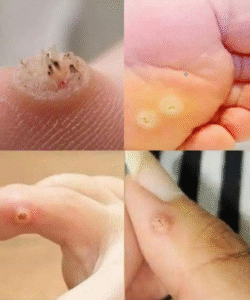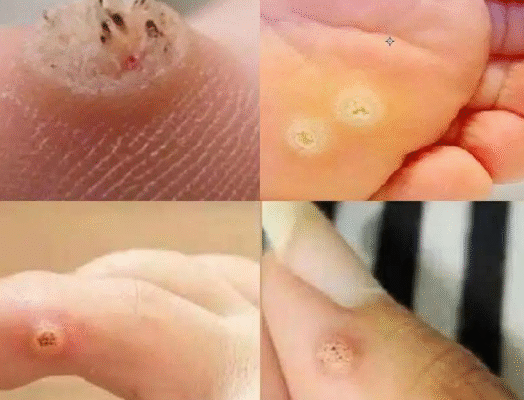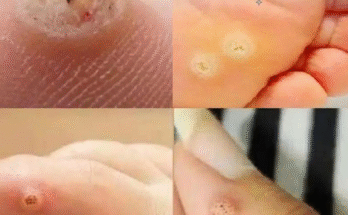
Be Very Careful: If You Notice This Skin Growth, It Could Be Serious
Our skin is more than just a protective barrier—it’s a window into our overall health. Sometimes, it’s the first place our body shows signs of deeper issues. While most skin changes are harmless, certain growths, bumps, or moles can be early warnings of something far more serious. The problem is that many people ignore them until it’s too late.
This is why understanding the warning signs of abnormal skin growths is vital. A simple spot you overlook today could be an early sign of a condition that’s easier to treat if caught early. So, let’s explore what these growths might mean, how to recognize danger signs, and what you should do if one appears.
Understanding Skin Growths
A “skin growth” can mean many things—moles, warts, cysts, lipomas, or even skin tags. Most are harmless and appear due to genetics, aging, or friction. But sometimes, what looks like an innocent bump can actually signal something more serious, such as skin cancer or an infection that needs medical attention.
Our skin cells grow, divide, and die in a balanced cycle. But when that balance is disrupted—by UV radiation, genetics, or cellular damage—cells can grow uncontrollably, forming abnormal lumps or lesions. These can appear anywhere: your face, neck, chest, back, or even under your nails.
The Common Types of Skin Growths
Before jumping to conclusions, it’s important to understand the common types of skin growths and how to tell which ones are likely harmless and which require caution.
-
Moles (Nevi):
Most moles are brown or black spots that develop during childhood or adolescence. They’re usually round, symmetrical, and uniform in color. But if a mole changes shape, grows rapidly, or starts itching or bleeding, it could be a sign of melanoma, the deadliest type of skin cancer. -
Skin Tags:
These small, soft flaps of skin are common in areas like the neck, armpits, and groin. They’re generally harmless, though sudden increases in number or irritation could suggest hormonal imbalance or diabetes. -
Warts:
Caused by the human papillomavirus (HPV), warts are rough bumps that can appear anywhere on the skin. While most are benign, persistent or painful ones should be examined, as certain HPV strains are linked to cancer. -
Cysts and Lipomas:
Cysts are sacs filled with fluid, while lipomas are soft, fatty lumps under the skin. Both are usually non-cancerous, but if they grow quickly, become painful, or change consistency, they need medical evaluation. -
Keratoses (Actinic or Seborrheic):
Actinic keratoses, in particular, deserve special attention. They look like rough, scaly patches—often on sun-exposed areas—and can be precancerous, meaning they may evolve into skin cancer if untreated.
The Danger Zone: When to Worry
So, how can you tell if that little bump or mole is dangerous? Dermatologists often use the “ABCDE rule” to identify warning signs of melanoma and other skin cancers:
-
A – Asymmetry: One half doesn’t match the other.
-
B – Border: Irregular, blurred, or jagged edges.
-
C – Color: Uneven color with shades of brown, black, red, or even blue.
-
D – Diameter: Larger than 6mm (about the size of a pencil eraser).
-
E – Evolving: Changes in size, shape, color, or new symptoms like bleeding or itching.
If your skin growth shows any of these features, you should see a dermatologist immediately. Early detection can literally save your life.
Another major red flag is rapid growth or pain. A lump that appears suddenly, doubles in size, or becomes tender should never be ignored. Some types of skin cancers, such as squamous cell carcinoma or basal cell carcinoma, can grow beneath the surface before becoming visible.
Possible Serious Conditions Linked to Skin Growths
-
Melanoma:
Often starts as a mole that changes over time. It can spread quickly to other organs if untreated. Early diagnosis is critical, as melanoma caught early has a very high survival rate. -
Basal Cell Carcinoma (BCC):
The most common but least dangerous skin cancer. It appears as a shiny bump, pink patch, or open sore that doesn’t heal. While rarely fatal, it can cause significant disfigurement if neglected. -
Squamous Cell Carcinoma (SCC):
Usually appears as a red, scaly growth or a sore that crusts and bleeds. It can spread deeper into tissues and nearby lymph nodes if untreated. -
Merkel Cell Carcinoma:
A rare but aggressive cancer that starts as a firm, painless nodule. It spreads fast, and early detection is crucial. -
Kaposi’s Sarcoma:
Characterized by purple or red patches on the skin, often linked to immune system weakness.
Why Early Detection Matters
The human skin regenerates rapidly, meaning cancerous cells can also spread quickly if unchecked. Catching skin cancer at its earliest stage increases survival chances dramatically—sometimes up to 98–99% for localized cases.
Unfortunately, many people delay seeing a doctor because they assume it’s “just a mole” or “just a skin tag.” By the time they notice pain or bleeding, the condition may already have advanced.
That’s why regular self-examinations and annual skin checks are essential. Standing in front of a mirror under good light, scan your body from head to toe—including your scalp, back, and feet. Use your phone camera or a trusted partner to check hard-to-see areas.
How to Protect Your Skin
Prevention is always better than cure. Here are crucial steps to reduce your risk of developing serious skin growths:
-
Limit Sun Exposure:
UV rays are one of the biggest culprits in skin cell damage. Use sunscreen with SPF 30 or higher daily—even on cloudy days. Wear protective clothing, hats, and sunglasses. -
Avoid Tanning Beds:
Artificial UV exposure is just as harmful, and studies show it significantly increases the risk of melanoma. -
Moisturize and Care for Your Skin:
Keeping your skin hydrated maintains its natural barrier and helps you notice new growths more easily. -
Watch for Family History:
If close relatives have had skin cancer or unusual moles, your risk may be higher. Inform your doctor during checkups. -
Healthy Lifestyle Choices:
Eat antioxidant-rich foods (like fruits and vegetables), stay hydrated, and avoid smoking—all of which promote healthier skin.
What to Do if You Notice a Suspicious Growth
If you spot something unusual, don’t panic—but don’t wait either. Take these steps:
-
Document It: Take clear photos and note any changes over days or weeks.
-
Avoid Scratching or Picking: Irritating a growth can worsen it or spread infection.
-
Book a Dermatology Appointment: A professional can perform a biopsy if needed to determine if it’s benign or malignant.
-
Follow Through with Treatment: If diagnosed early, many skin cancers are treatable with simple outpatient procedures.
Remember—early action saves lives.
Final Thoughts
Your skin is your body’s largest organ and your first line of defense against the world. Every freckle, mole, or bump tells a story—but not all stories are harmless. Some are quiet warnings that something deeper needs attention.
By paying attention to small changes, using protection against the sun, and seeking medical advice promptly, you take control of your health. The next time you notice a strange growth, don’t ignore it or cover it with makeup. Instead, pause, examine, and act.

